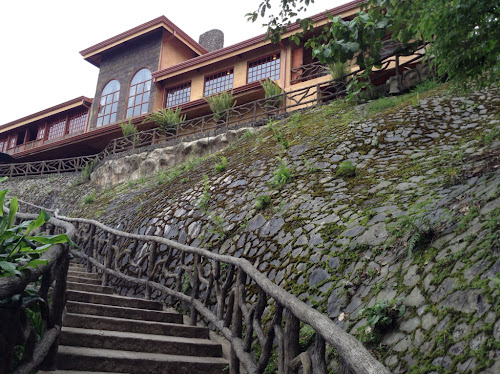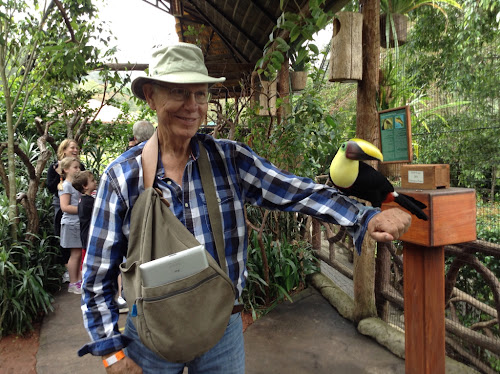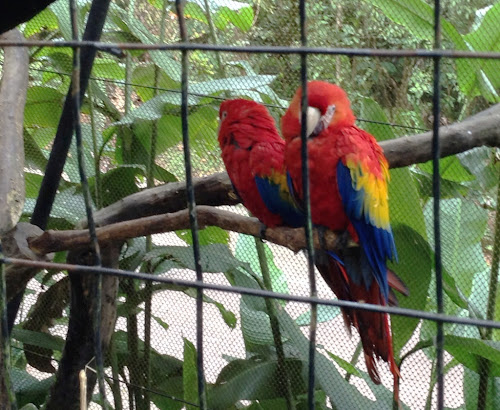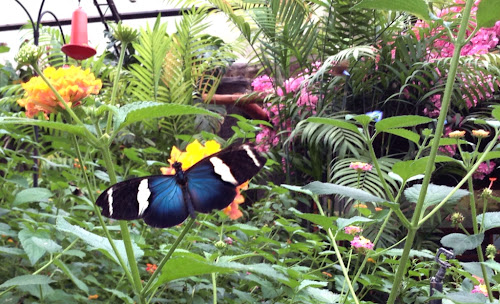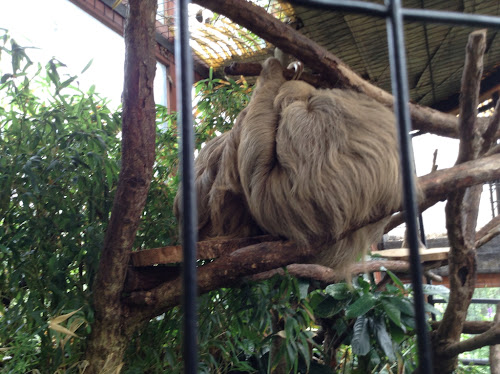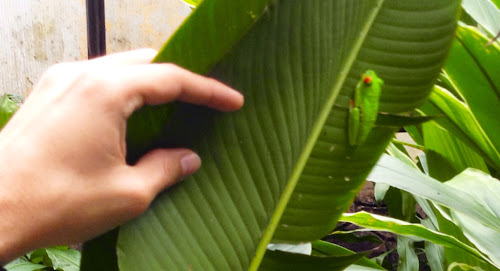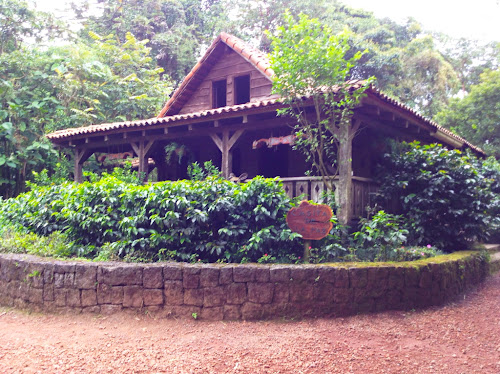Thursday, March 21 (first day of Spring)
We have been in Costa Rica for seven weeks now. We return home two weeks from tomorrow. We have been living in condos, both with ample space for us - more, in fact, than we have at home - and kitchen and laundry facilities and other conveniences. But we are not living resort-style or in high-end quarters. In El Coco, we lived in a condo development that did cater a lot to Gringos, although Ticos did live, or vacation, there too. In Atenas, we are living in the center of town in a Tico neighborhood. We have been living a middle-class Tico lifestyle, and this gives us a good vantage point from which to compare life here with life at home in our small condo in our small town by the sea in Massachusetts.
As Bob and I have conversations about our time here, and question whether or not we would return next year, I have been thinking a lot about life in Costa Rica - what I love and appreciate about being here and what I am coming to love and appreciate even more about my life back home. So, here are some of my random thoughts about living in Costa Rica.
Weather
We came to Costa Rica primarily to bypass at least part of the long, cold, dark, snowy winter in New England. And that we have done, in spades! It has been sunny almost every day. (Today has been cloudy and hazy.) We have certainly gotten our RDA of Vitamin D. We came during the dry season here, and until this evening we had not had any rain - not in Coco, not in Atenas, not even in the two "cloud forests" we have visited. We wanted warm weather, and for the most part we have gotten hot weather. Even Atenas, which is purported to be in the 70's year 'round, has been in the high 80's lately. (Only here, there is no A/C.) The extreme heat in both areas has cramped our style a bit. We had hoped to do a lot more walking.
So, what I love about living in Costa Rica is the sunshine and the warmth. I love being able to dress in summer clothes. I love being around green leaves and beautiful, colorful flowers. I love the profusion of birds and birdsong. I love eating al fresco - almost everywhere. What I don't love is the hot, hot weather - the days over 80 or 85. And there have been a lot of them, especially in El Coco, but also here sometimes in Atenas. And I miss the rain - sometimes - the warm, soft, gentle rains that come in summer back home. I don't miss the snow, ice, and freezing weather!
Volcanos, Earthquakes, and Landslides
Visiting inactive or low-level active volcanos is a big part of the tourist trade in Costa Rica. All well and good, except that every so often a volcano in Costa Rica seriously blows its top - often without warning. Arenal Volcano blew up in 1968 and wiped out a nearby town. We visited Poas a few days ago, and watched steam pouring out of fumaroles in the still active main crater. I found the crater fascinating, but was also grateful to have left without incident.
Even more often, there is an earthquake here in Costa Rica. One of our tour guides told us that there is a big earthquake here about every five years - big enough to do serious damage. And there are smaller quakes and tremors several times a year. There was a big one in Guanacaste in November of 2012 - a mere four months ago. This quake was felt all over the country. We saw the effects of this quake both in El Coco and in San Jose. We missed being in it by only two months. We haven't experienced a quake yet. Let's hope we miss that fun adventure.
Then there are the very frequent mudslides that happen during the rainy season, sometimes blocking roads or damaging houses or other property. In 2010, twenty people were killed in a mudslide that buried parts of Escazu - a town just outside San Jose that we will be visiting for six days just before we fly home.
For the people of Costa Rica, the chances of experiencing at least one of these events during their lifetime is great. I know we also have our weather and geologic events in the USA - earthquakes, tornados, hurricanes, floods, blizzards, and a rare volcanic eruption - but the odds of being affected by one of these events are much lower back home than they are here. How do Ticos live with the ever-present threat of these disruptive and damaging events and still maintain their sense of La Pura Vida?
Water
Fortunately, the areas of Costa Rica we have lived in or visited have potable drinking water. But the infrastructure here around water delivery needs work. We have lost water or water pressure many times, both in El Coco and Atenas. Sometimes the water is off for an hour or two, sometimes for almost a whole day. And the times of water loss seem random and unpredictable. Also, running hot water is pretty rare. We get some warm water in the showers, but nowhere else. Laundry and dishes are washed in cold water.
I have a new appreciation of the water quality and the water delivery systems back home in the States.
Bathroom Issues
Septic systems or sewage systems in Costa Rica aren't quite up to snuff either. I don't even want to know how bathroom waste is handled here. But here is the text of a sign that is posted opposite the toilets in our two bathrooms in Atenas; and something similar is posted in most all public bathrooms:
Please put the TOILET PAPER, etc. in the TRASH CAN, not in the toilet basin. Costa Rican septic system is different. Thank you!
This practice seemed pretty disgusting to me when I first got to Costa Rica, but now it doesn't seem so bad, as long as the waste cans are covered and emptied frequently. Perhaps it is even a good idea? Perhaps following this practice would improve our septic and sewage treatment facilities too?
Electricity
The electrical power supply is the same type as we have in the States, so our electronic and electrical gadgets do not require adapters and work fine here. That is the plus side. The electrical infrastructure here in Costa Rica needs work, in two ways. One: we lose power every so often. We have lost power both in El Coco and in Atenas. As is the case with the water supply, these outages are random and come without warning. Two: in some places, the electrical wiring is jury-rigged and can be dangerous. There does not appear to be a code that everyone must follow. We have not encountered problems with this in the places we have rented, but have encountered them elsewhere. For example, one day while walking along the street in Atenas, I almost ran into a low-hanging wire with bare wire exposed at the end.
I have a new appreciation of the electrical power infrastructure we have in the States.
Noise and Quiet
Here in Atenas, we live on a street that is quite noisy, even though it is not a main thoroughfare in town. All sorts of vehicles pass by here - trucks, buses, cars, motorcycles, bicycles, horses (yes, occasionally horses!) - and many of the motorized vehicles have souped-up engines. The guys around here really seem to enjoy showing off their stuff! We also have a car next door whose car alarm seems to go off many times a day - often triggered by all the souped-up vehicles. We also have church bells pealing hourly and multiple loud conversations in the street and occasional loud music and parties and sounds of house repairs. We are often in conversation that we have to suspend until the noise passes. Quiet hours here are about midnight (later on Saturdays) to about 4 am, when the roosters start crowing and the neighborhood and town start to stir.
I love, appreciate, and miss our quiet street and town back home!
Open Windows
In Atenas, there are no screens on our windows or doors. Our windows, and the sliding glass door to the balcony, are left open a lot. Theft is not an issue for us in Atenas because we are on the second floor. And the marvel of it all is that, so far at least, no insects or animals (birds, bats, squirrels, lizards, etc) have come inside. This open-air living is delightful!
Food, Grocery Shopping, and Eating Out
We have found the food in Costa Rica to be tasty and nutritious. I haven't had a meal I would describe as "wonderful" or "very delicious", but I also have never had a meal I would label as "bad" or "awful". The typical Tico meal that one would order here would include fruit, fried plantain, fresh vegetables, rice, beans, a meat (chicken, fish, pork, or beef), a spot of cheese, and a tortilla. We have fallen in love with the fresh and cold fruit drinks made with the fruit, or fruits, of your choice, water, ice, and sometimes some sugar. Bob's favorite is made with lemon (batido de limonada); my favorite is made with strawberries, water, and no added sugar (batido de fresas en agua sin azucar).
Shopping in the grocery stores has been an adventure. We found one supermarket in El Coco that was similar to the markets back home and carried many of the brands we are familiar with. But we paid a high price for that. All imported grocery items are taxed, and therefore are high-priced items. The local foods, such as fresh produce and products grown in Costa Rica, are reasonably priced. Overall, we have spent more in grocery stores here than we have back home. Also, finding our way around the aisles, finding the foods we want, and reading the labels have been challenging activities - or, framed another way, fun learning activities.
I do miss and appreciate our supermarkets back home.
For the most part, given our limited kitchen facilities, we have eaten most of our meals out. We try to have at least one meal at home each day, usually either breakfast or lunch, but occasionally dinner. In El Coco, the variety and number of restaurants there made it fun, but more expensive. In Atenas, we have relatively few restaurants to choose from, which has become a little boring, but the prices have been very reasonable. Here, we find that eating out is less expensive than buying our food and eating at home.
I am looking forward to being back home and shopping for and cooking our own meals - at least for a while.
Sidewalks, Roads, and Driving.
We are both walkers, and walking around El Coco and Atenas has been challenging. The sidewalks are either non-existent or horrendous. The surfaces are inconsistent, uneven, sometimes containing holes and other obstacles. There are drainage ditches of various sizes between the sidewalks and the roads, which are real hazards to walkers and drivers alike. If one walks in the road, instead of on the sidewalk, one faces the hazards posed by vehicles that often pass perilously close to pedestrians.
As for the roads themselves, most are narrow, two-lane roads with no shoulders or guard rails and deep ditches or ravines on both sides. Many secondary roads are still gravel and can be treacherous to drive. Except for the major highways (many still only one lane in each direction), most roads do not have painted lines down the middle or along the sides. Passing is rarely prohibited here, even on steep, narrow, very curvy mountain roads. Passing another vehicle is a dangerous activity, though many Tico drivers do this way too often. And, yes, the accident rate is high here.
One thing I will NOT miss about Costa Rica is the sidewalks, roads, and hazardous driving. I come away with a much greater appreciation of our well-maintained sidewalks and roads and our government-regulated rules of the road.
Transportation
As an American, I am spoiled. At home, I have a car and I can go anywhere. We also have other good transportation systems - trains, planes, buses, subways, and more. We are here in Costa Rica on a budget. We cannot afford a rental car here (about $65 per day). There is an extensive bus system here, and that is how most Ticos get around. Automobiles are very expensive here, and many Ticos cannot afford them. They take buses for long-distance travel and taxis for very local travel. Taxis are plentiful here and local travel is affordable. But longer trips by taxi or with a private driver can cost upwards of $15-20 an hour.
We have been traveling mostly by public bus and local taxi. But we have hired a private driver three times since we have been here. We also walk a lot locally. But we could see so much more from an automobile. If cost weren't an issue, I would either rent a car or hire a private driver more often. But, our budget does not allow for this.
I love my/our car and I miss it. One more thing I will no longer take for granted when I get home.
Feeling Safe
Although Costa Rica is a country without a military, and although most Ticos are polite, relaxed, helpful, warm people, there is here - at the same time - a feeling of insecurity In the air. As mentioned in other blog posts, the big cities and the tourist sites, the airports, buses and bus stations are known to have a high rate of pick pocketing and other forms of theft. Gringos and tourists are especially targeted. And the majority of homes here are secured behind walls, fences, and high gates. The official government police presence is pretty low-profile, but private security guards are often in evidence. In El Coco, a tourist town, there were security guards all over the place. Even here in Atenas - a seemingly safe and low-crime area - there is a security guard posted at the bank. (This is common all over Costa Rica.) And the sound of car alarms going off is pretty prevalent.
If you hang out at a restaurant that caters to Gringos - such as Kay's - you will hear stories of passports and wallets being stolen, houses being broken into, cars being stolen or broken into, and the like. There is a dark underbelly to this land of warmth and light. I know we have our share of crime back in the states, but I never feel as nervous and "on guard" as I feel here.
I definitely will NOT miss this frequent feeling of apprehension. I look forward to being able to walk around my town back home without worrying about my purse being snatched. I look forward to living in our condo without worrying about being broken into and robbed. I look forward to being able to leave items in my locked car and not finding my windows smashed and the contents stolen.
Our Atenas Apartment
I love the size and layout of our apartment in Atenas. I would furnish and decorate it differently and would add more storage in the kitchen and a dryer in the laundry area. But what I love about it is the spaciousness - the two bedrooms and two full baths, the huge walk-in dressing room, and the rain-protected balcony with the view of the mountains and the valley lit up at night. The location is noisy, and that is the main drawback. If I could magically take some features back to our smaller, but lovely, condo, I would bring the dressing room, the oversized master bath, the queen-sized bed, and the view from the balcony. I have enjoyed living in this space - even more than in the condo in El Coco, which was also nice - BUT I look forward to returning to our lovely condo back home.
Oh, and our apartment came with once-a-week maid service. This has been a treat, but not one we need to repeat back home. Both Bob and I take pride in cleaning our home and have no objections to doing it ourselves.
Language and Currency
One can survive here, in most places, without speaking Spanish, but it is much better to be able to speak it. I know a few words, phrases, and sentences in Spanish. I can order from a menu, can ask where the bathroom is (Donde esta el bano?), ask for the bill (La cuenta, por favor.), and say a few polite greetings. I can read more Spanish than I can speak. That's about it. Bob speaks quite a bit more Spanish than I do, and that has made our life here much better in terms of navigating around and connecting with the Ticos. If we were to come back here next year - or go to any other Spanish-speaking country - I would learn Spanish!
The Costa Rican currency is in colones. The currency system is a bit unwieldy. One thousand colones (colloquially called one mil) is roughly equivalent to $2 US. Fortunately, the Costa Ricans accept US currency almost everywhere, provided you start with a $20 bill. With this, you get your change in colones, and then can use either to pay most bills. Exception: bus fares. These must be paid in colones. A lot of change is given in coins, and most coins have very little value in terms of US dollars. The biggest coin is 500 colones, which equals roughly one dollar. The smallest coin is only worth a fraction of a cent in US dollars. The coins get heavy to carry around. Bob thinks that Costa Rica should revamp its currency system to make colones denominations equal to US dollars, and eliminate all the useless coins. That probably won't happen. But really, the dual currency system works well, and tourists need not exchange any money before entering the country or after being here a while. Just bring plenty of twenty-dollar bills. And use up your colones before you leave.
Nature and the Environment
I am the original "nature girl." Bob does not quite share my pull to the natural environment; he enjoys the town or city life more. I love Costa Rica for its willingness to preserve its beautiful natural areas, to be stewards of its plants and animals and beautiful natural features. I have loved the parks and preserves we have visited and I wish we could have seen them all. This has been my favorite part of our trip here.
I worry for the Costa Ricans. There is a lot of development going on here, mostly by foreign investors. The land that is not secured in parks and preserves could disappear here, just as it has in our country. I don't like seeing American fast food joints and mega-sized stores here in Costa Rica. (I don't even like seeing them in our country.) I hope The Costa Rican people will resist over-development and retain the Tico flavor that makes this country so special and endearing.
La Pura Vida
I hope the spirit of this National slogan will stay with me always. La Pura Vida - the pure life, the don't-worry-be-happy life, the carpe diem life, the take-it-or-leave-it life, the relaxed, no worries life. This is the best gift of this trip here. I want to bring this philosophy back home as my souvenir and my gift to all my loved ones. La Pura Vida!





















